Why is Genetic Diversity Important in Conservation Efforts?
In the grand tapestry of life on Earth, genetic diversity is the vibrant thread that weaves resilience, adaptability, and survival into the fabric of ecosystems. Imagine a world where every species has a unique set of traits, like a toolbox filled with different tools ready to tackle any challenge that comes their way. This diversity is not just a nice-to-have; it's a critical component of conservation efforts aimed at preserving our planet's rich biodiversity. Without it, we risk losing entire species and the ecosystems that depend on them.
Why does genetic diversity matter so much? Well, think about it: just like a diverse group of friends brings different perspectives and solutions to a problem, a genetically diverse population can better withstand environmental changes. These changes can include everything from climate shifts to disease outbreaks. When a population has a wide range of genetic traits, it increases the chances that some individuals will possess the necessary adaptations to survive and thrive in changing conditions. This is the essence of ecosystem resilience.
Moreover, genetic diversity plays a vital role in the long-term survival of species. A varied gene pool can significantly reduce the risk of extinction. For example, consider a population of animals that all share the same genetic makeup. If a disease strikes, it could wipe out the entire population. However, if there is genetic variation, some individuals may have resistance to the disease, allowing them to survive and reproduce. This leads to healthier populations and a better chance of enduring through tough times.
In essence, genetic diversity is not just about individual species; it’s about the health of our planet as a whole. When we lose genetic diversity, we also lose the intricate relationships that sustain ecosystems. Every plant, animal, and microorganism plays a role in maintaining the balance of our environment. Therefore, protecting genetic diversity is akin to safeguarding our future. It’s a call to action for conservationists, policymakers, and every one of us to recognize the importance of this biological wealth.
- What is genetic diversity? Genetic diversity refers to the variety of genes within a species or population, which contributes to its ability to adapt and survive in changing environments.
- Why is genetic diversity important for conservation? It enhances the resilience of ecosystems, promotes species survival, and helps maintain the health of our planet's biodiversity.
- How does inbreeding affect genetic diversity? Inbreeding can reduce genetic diversity, leading to increased vulnerability to diseases and lower survival rates among populations.
- What can be done to enhance genetic diversity? Conservation strategies such as establishing protected areas, implementing captive breeding programs, and creating habitat corridors can help maintain and enhance genetic diversity.
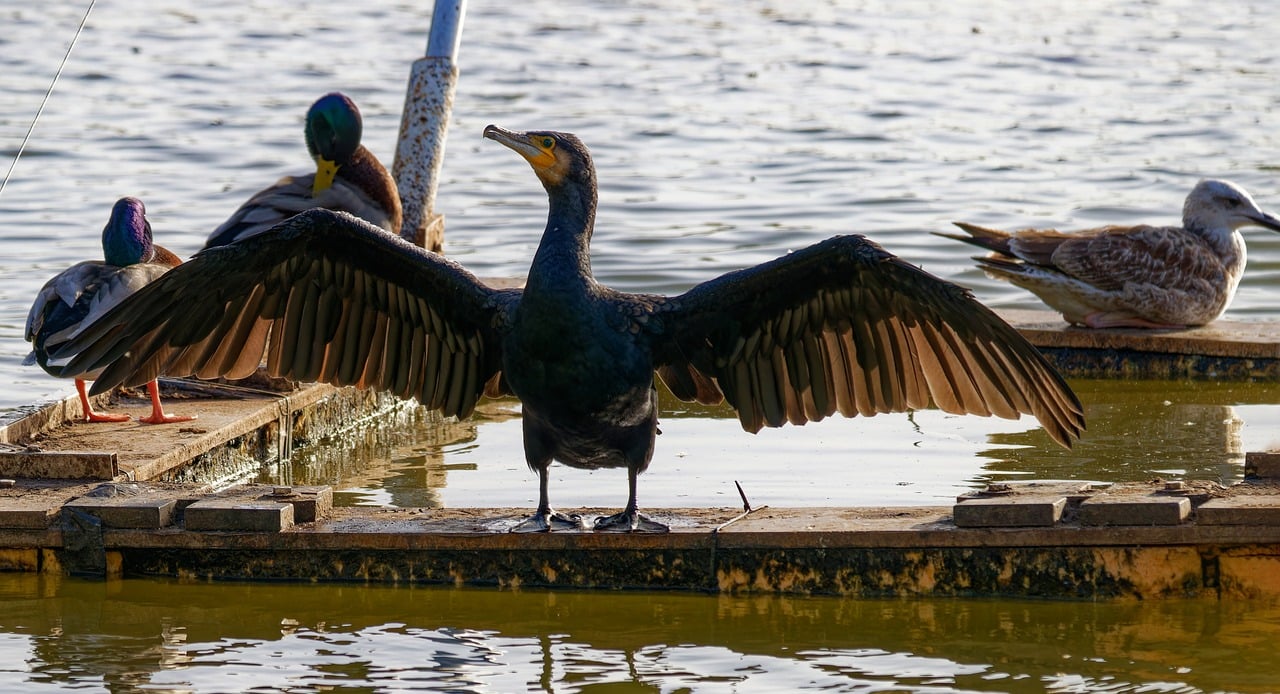
The Role of Genetic Diversity in Ecosystem Resilience
Genetic diversity plays a crucial role in maintaining ecosystem resilience, which is essentially the ability of an ecosystem to bounce back from disturbances, whether they are natural disasters or human-induced changes. Imagine an ecosystem as a complex web of life, where each species is a thread that contributes to the overall strength and stability of that web. When we have a wide variety of genetic traits within species, it’s like having a robust fabric that can withstand tearing and fraying. A diverse gene pool means that some individuals are likely to possess traits that allow them to survive and thrive under changing conditions.
For instance, consider a forest ecosystem. In a genetically diverse forest, some trees might be more resistant to drought, while others may be better at withstanding pests. This variety ensures that even if a particular threat arises, not all trees will be equally affected. The presence of diverse genetic traits enhances the adaptability of the entire ecosystem, making it more resilient to environmental changes. When a disturbance occurs, such as a wildfire or a disease outbreak, the genetically diverse species can recover more quickly, promoting overall ecosystem health.
Moreover, genetic diversity contributes to the stability and functionality of ecosystems by supporting various ecological processes. For example, pollinators, which are crucial for plant reproduction, often thrive in environments with a rich mix of plant species. This diversity not only provides food for the pollinators but also ensures that plants can reproduce successfully, leading to a flourishing ecosystem. In contrast, ecosystems with low genetic diversity can become more vulnerable to diseases and environmental stressors, leading to a potential collapse of the entire system.
In summary, the role of genetic diversity in ecosystem resilience cannot be overstated. It acts as a buffer against environmental changes, supports ecological processes, and ultimately contributes to the health and sustainability of our planet's biodiversity. Without it, ecosystems become fragile and susceptible to collapse, jeopardizing the myriad of life forms that depend on them. As we continue to face challenges like climate change and habitat destruction, recognizing and fostering genetic diversity in conservation efforts is more important than ever.

Impact on Species Survival
When we talk about the survival of species, genetic diversity is a fundamental player in the game. Imagine a sports team where every player has a unique skill set; this diversity allows the team to adapt and respond to different challenges on the field. Similarly, a varied gene pool equips species with the tools they need to thrive in changing environments. It’s like having a toolbox filled with different tools – the more diverse the tools, the more problems you can solve.
One of the most significant benefits of genetic diversity is its ability to reduce the risk of extinction. Species with a rich genetic makeup are more likely to withstand diseases, environmental changes, and other stressors. For example, consider the case of the Florida panther. Due to a lack of genetic variation, this species faced serious health issues, including heart defects and low reproductive rates. When conservationists introduced a few Texas cougars into the population, it was like giving the panthers a much-needed boost of vitality. This infusion of new genes improved their overall health and increased their chances of survival.
Moreover, a diverse genetic pool enhances reproductive success. In species where individuals are more genetically similar, mating can lead to inbreeding, which often results in offspring that are less fit for survival. A lack of genetic diversity can lead to a phenomenon known as the “allele effect,” where the population becomes so small and genetically similar that it can no longer sustain itself. This is particularly concerning for endangered species, where every individual counts. For instance, the cheetah population has faced significant declines due to inbreeding, leading to reduced fertility and increased vulnerability to disease. The genetic bottleneck has made it challenging for cheetahs to adapt to changing environments, putting their survival at risk.
In essence, genetic diversity is not just a luxury; it’s a necessity for the survival of species. Without it, populations become fragile and susceptible to extinction. As we continue to face the impacts of climate change and habitat destruction, the importance of maintaining a rich genetic tapestry cannot be overstated. Conservation efforts must prioritize genetic diversity to ensure that species can adapt, thrive, and contribute to the ecological balance of our planet.
To further illustrate the importance of genetic diversity in species survival, let's look at a comparative table of species with varying levels of genetic diversity and their survival outcomes:
| Species | Genetic Diversity Level | Survival Outcome |
|---|---|---|
| Florida Panther | Low | Health issues, low reproductive success |
| Cheetah | Very Low | High vulnerability to disease, declining population |
| Gray Wolf | Moderate | Stable population, adaptable to environmental changes |
| Galápagos Tortoise | High | Healthy population, resilient to diseases |
As we can see, species with higher genetic diversity tend to have better survival outcomes. This reinforces the idea that conservation efforts should focus on enhancing genetic variation to promote healthier, more resilient populations.
- Why is genetic diversity crucial for species survival? Genetic diversity enables species to adapt to environmental changes and resist diseases, thereby reducing the risk of extinction.
- How does inbreeding affect genetic diversity? Inbreeding reduces genetic diversity, leading to health issues and decreased reproductive success, which can threaten a population's survival.
- What can be done to enhance genetic diversity in endangered species? Conservation strategies such as habitat corridors, translocation, and captive breeding programs can help introduce genetic variation into isolated populations.
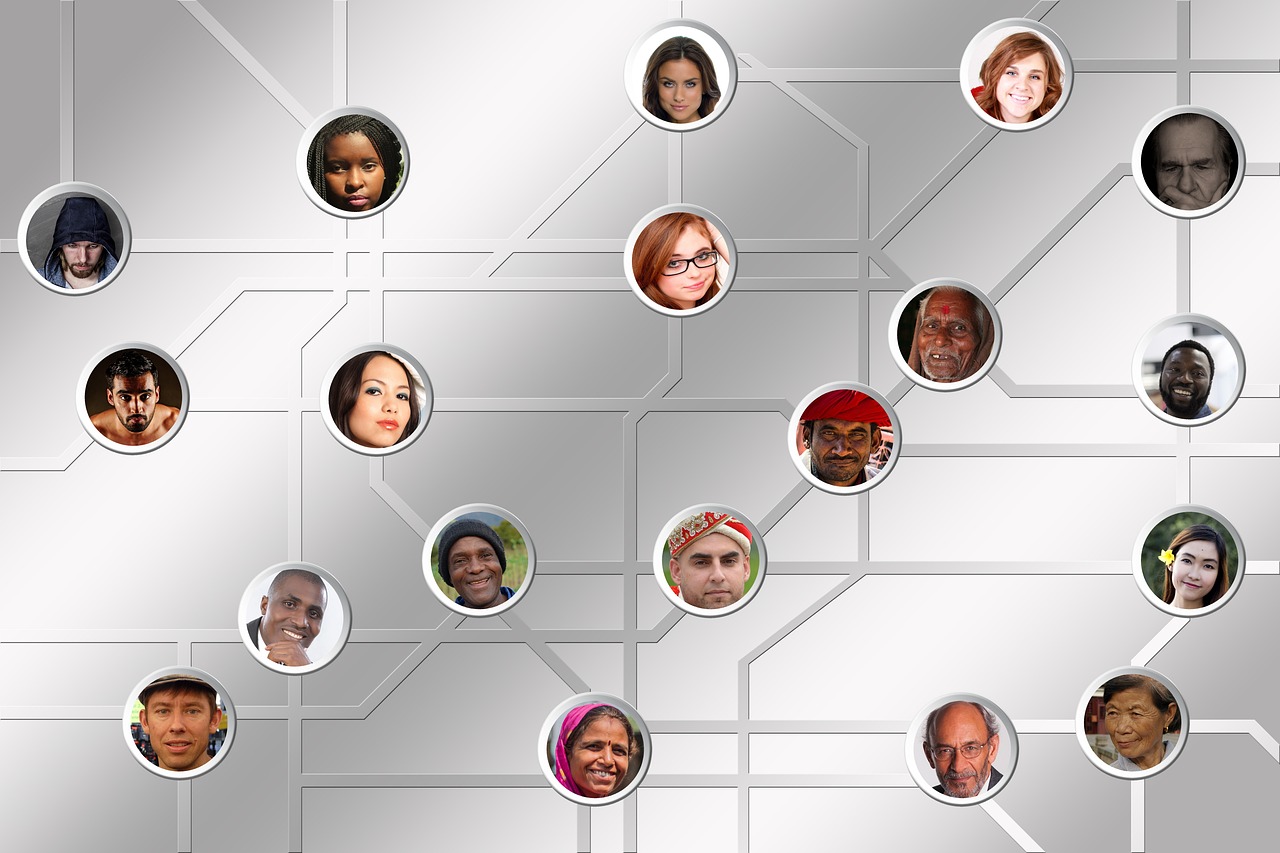
Inbreeding and Its Consequences
Inbreeding, the mating of closely related individuals, can have profound and often devastating consequences on wildlife populations. When genetic diversity diminishes due to inbreeding, it can lead to a series of unfortunate events that threaten the survival of species. Imagine a family tree where everyone is too closely related; the genetic flaws can accumulate over generations, much like a snowball rolling down a hill, growing larger and larger with each turn. This accumulation can result in a weakened gene pool, which in turn leads to increased susceptibility to diseases, reduced fertility, and even higher mortality rates.
One of the most alarming consequences of inbreeding is the phenomenon known as inbreeding depression. This occurs when the gene pool is so limited that harmful recessive traits become more common. For example, imagine a small population of animals where a genetic disorder lies dormant in some individuals. When these animals breed, the chances of their offspring inheriting this disorder increase significantly, leading to a higher incidence of health problems. This situation can spiral out of control, resulting in a population that struggles to survive in the wild.
Additionally, inbreeding can reduce the overall fitness of a population. Fitness refers to an organism's ability to survive and reproduce in its environment. When genetic diversity is compromised, the population may lack the necessary adaptations to cope with environmental changes, such as shifting climates or emerging diseases. This lack of adaptability can make the difference between survival and extinction. In fact, studies have shown that populations with low genetic diversity are often less capable of recovering from environmental stresses.
To illustrate the consequences of inbreeding further, consider the following table that summarizes the key impacts:
| Consequence | Description |
|---|---|
| Increased Disease Susceptibility | Populations become more vulnerable to infections and diseases due to a lack of genetic variation. |
| Reduced Fertility | Inbreeding can lead to lower birth rates and higher rates of stillbirths. |
| Higher Mortality Rates | Inbred individuals often have shorter life spans and higher chances of dying young. |
| Loss of Adaptability | Populations struggle to adapt to environmental changes, increasing the risk of extinction. |
As we ponder the future of endangered species, it becomes clear that addressing inbreeding is not just an option; it is a necessity. Conservationists are actively working to implement strategies that can help mitigate these effects. For instance, introducing individuals from different populations into a struggling group can enhance genetic diversity and improve the overall health of the population. This process, known as genetic rescue, has shown promising results in various species, demonstrating that with the right interventions, we can reverse some of the damage caused by inbreeding.
In conclusion, inbreeding poses a significant threat to the health and survival of wildlife populations. By understanding its consequences, we can better appreciate the importance of maintaining genetic diversity in conservation efforts. After all, a healthy population is one that thrives on a rich tapestry of genetic variation, much like a vibrant garden filled with diverse flowers, each contributing to the beauty and resilience of the ecosystem.
- What is inbreeding depression? Inbreeding depression refers to the reduced biological fitness in a population due to inbreeding, leading to increased susceptibility to diseases and lower reproductive success.
- How can conservationists prevent inbreeding? Conservationists can prevent inbreeding by creating habitat corridors that connect isolated populations and by introducing individuals from different genetic backgrounds.
- Why is genetic diversity important? Genetic diversity is crucial for the adaptability and resilience of species, allowing them to survive environmental changes and resist diseases.

Case Studies of Inbreeding
When we talk about the consequences of inbreeding, real-world examples can paint a clearer picture of its devastating effects on wildlife populations. One of the most cited cases is that of the Florida Panther. Once numbering in the thousands, this iconic subspecies of cougar faced a drastic decline due to habitat loss and hunting. By the 1990s, the population had dwindled to around 20 individuals, leading to severe inbreeding. The result? Increased instances of heart defects, kinked tails, and other genetic disorders. This situation highlights a critical point: when genetic diversity is compromised, the health and viability of a species can plummet.
Another striking example is the Cheyenne River Sioux Tribe's efforts to conserve the Black-footed Ferret. Once believed to be extinct, a small population was discovered in Wyoming in the 1980s. However, the genetic diversity among these ferrets was alarmingly low. To combat this, conservationists implemented a captive breeding program that included individuals from different regions, thus introducing new genetic material. This initiative not only increased the population size but also improved the overall health and reproductive success of the ferrets, demonstrating the importance of genetic variation.
In the realm of marine life, the case of the Coral Reefs serves as a sobering reminder of how inbreeding can impact biodiversity. Coral species, which rely on a diverse gene pool to adapt to changing ocean conditions, have shown signs of reduced genetic diversity due to climate change and pollution. For instance, the Staghorn Coral, once thriving in the Caribbean, has seen significant declines. Research indicates that populations with low genetic diversity are less resilient to stressors like rising temperatures and ocean acidification. This situation underscores the urgent need for conservation strategies that prioritize genetic diversity to ensure the survival of these vital ecosystems.
These case studies illustrate a common theme: inbreeding can lead to a cascade of negative effects that threaten not just individual species but entire ecosystems. By understanding these real-world implications, we can better appreciate the need for conservation efforts that focus on maintaining and enhancing genetic diversity. It’s a reminder that every species, no matter how small, plays a critical role in the tapestry of life on Earth.
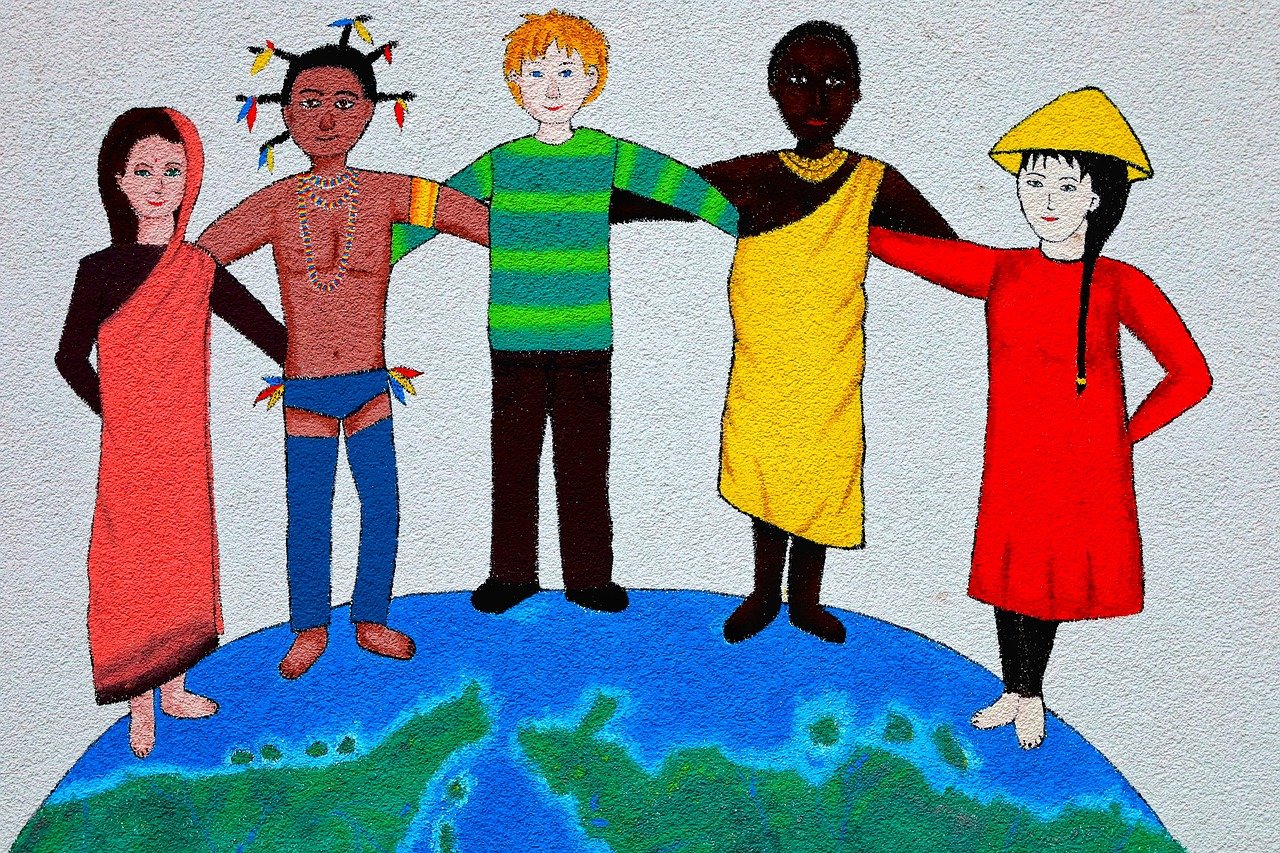
Strategies to Mitigate Inbreeding
Inbreeding poses a significant threat to the survival of many species, leading to a cascade of negative effects that can jeopardize their genetic health. Fortunately, there are several effective strategies that conservationists and wildlife managers can implement to mitigate the risks associated with inbreeding. One of the primary approaches is the establishment of habitat corridors. These corridors act as vital links between isolated populations, allowing individuals to migrate and interbreed. Imagine a series of islands in a vast ocean; without bridges connecting them, the species on each island become trapped in their own genetic bubble, unable to share their diverse genetic material. Habitat corridors serve as those bridges, enhancing genetic flow and reducing the risks of inbreeding.
Another strategy involves translocation efforts, where individuals from genetically diverse populations are introduced to isolated groups. This method not only increases genetic variation but also promotes healthier populations. For instance, if a population of a certain species has been dwindling and is at risk of inbreeding, introducing new individuals from a more robust population can rejuvenate the gene pool. This is akin to adding fresh ingredients to a recipe; it enhances the overall flavor and nutrition of the dish!
Additionally, conservationists can implement managed breeding programs in captivity. These programs are designed to ensure that breeding pairs are selected based on genetic diversity criteria, which helps to maintain a healthy gene pool. Captive breeding has seen success stories, particularly with species on the brink of extinction. For example, the California condor was brought back from the edge of extinction through a carefully managed breeding program that prioritized genetic diversity.
Moreover, habitat restoration plays a crucial role in mitigating inbreeding. By restoring and expanding natural habitats, we can create larger, interconnected ecosystems that support diverse populations. This not only aids in the survival of species but also enhances their resilience to environmental changes. Just like a garden thrives better when it's well-tended and diverse, so too do ecosystems flourish when they are rich in genetic variety.
Finally, public awareness and community involvement are essential in these conservation efforts. Educating local communities about the importance of genetic diversity and the dangers of inbreeding can foster a sense of responsibility and encourage participation in conservation activities. When people understand the stakes, they are more likely to support initiatives that protect wildlife and their habitats.
In summary, mitigating inbreeding is a multifaceted approach that includes habitat corridors, translocation, managed breeding, habitat restoration, and community engagement. By employing these strategies, we can enhance genetic diversity and, ultimately, the health and survival of vulnerable species.
- What is inbreeding and why is it harmful? Inbreeding occurs when closely related individuals breed, leading to a reduced gene pool and increased vulnerability to diseases and genetic disorders.
- How do habitat corridors work? Habitat corridors provide safe passage for wildlife between fragmented habitats, allowing for genetic exchange and reducing the risks associated with isolation.
- What is a managed breeding program? Managed breeding programs are initiatives that carefully select breeding pairs based on genetic diversity to ensure healthier offspring and maintain a robust gene pool.
- Can individuals help in conservation efforts? Absolutely! Individuals can support local conservation initiatives, educate themselves and others about the importance of biodiversity, and participate in habitat restoration projects.
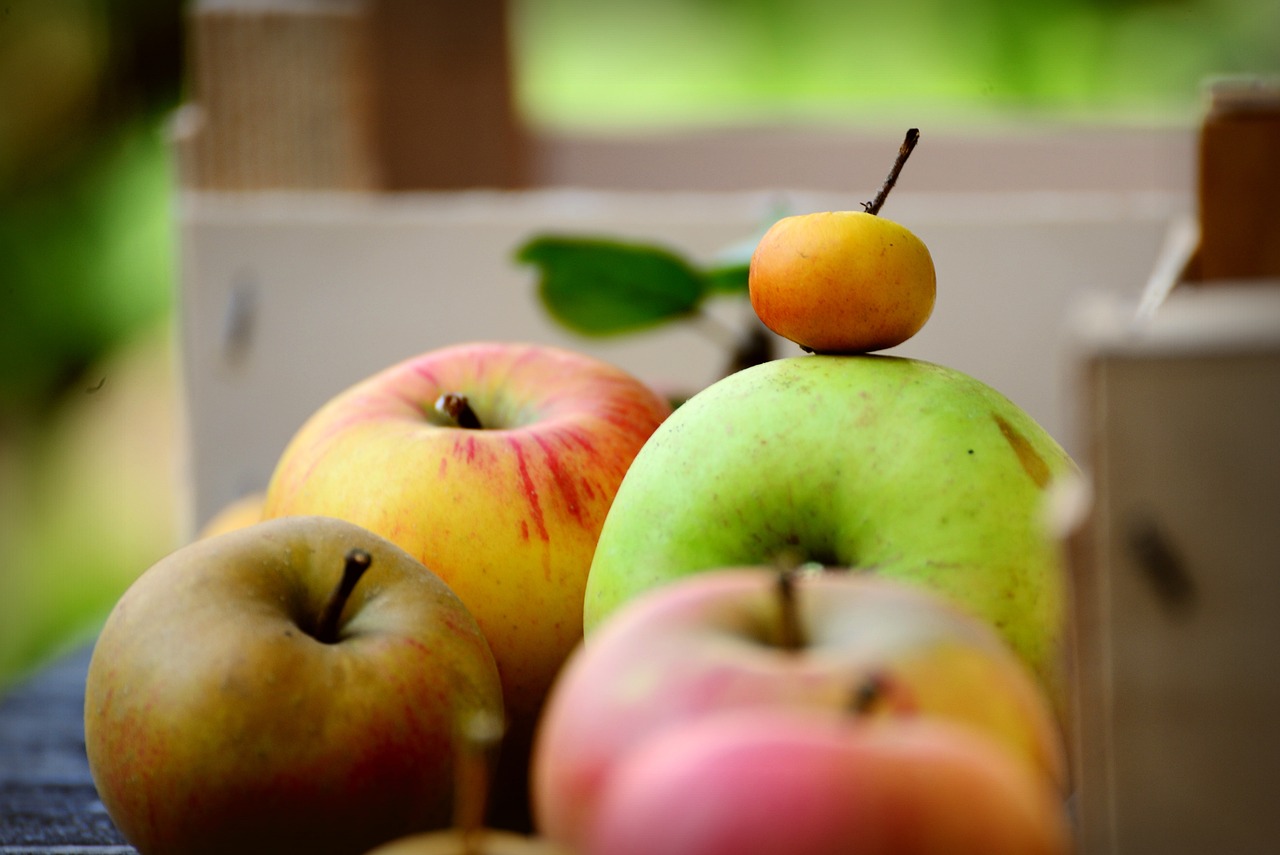
The Importance of Genetic Variation
Genetic variation is the cornerstone of a species' ability to adapt to changing environments. Imagine a world where every individual of a species is like a clone, sharing the same genetic makeup. What would happen when a new disease emerges or when the climate shifts dramatically? It’s a recipe for disaster! A diverse gene pool means that some individuals will possess traits that allow them to survive and thrive under new conditions, while others may not. This variation is akin to a toolbox filled with different tools—each one designed to tackle specific challenges. When faced with adversity, having a variety of tools at your disposal can mean the difference between survival and extinction.
Consider the example of a forest ecosystem. Within this ecosystem, trees, plants, and animals all contribute to the overall health of the environment. If a disease strikes, the trees with genetic traits that confer resistance will survive, allowing those species to continue to thrive and support the entire ecosystem. This resilience is crucial not just for the species themselves, but for the myriad of organisms that rely on them for habitat and sustenance. Without genetic variation, entire ecosystems can collapse, leading to a domino effect that impacts countless other species.
Furthermore, genetic variation plays a vital role in the long-term adaptability of species. As climate change accelerates, habitats are shifting, and species must adapt at an unprecedented rate. The ability to adapt is fundamentally rooted in genetic diversity. For instance, certain populations of animals might develop traits that allow them to tolerate higher temperatures or altered food sources. Those that lack such traits may face extinction, leading to a loss of biodiversity that can have far-reaching consequences.
In summary, genetic variation is not just a fancy term; it's a lifeline for species survival and ecosystem stability. Without it, our planet's biodiversity is at risk. To illustrate this point further, let’s look at a simple table summarizing the benefits of genetic variation:
| Benefit | Description |
|---|---|
| Adaptability | Increases the likelihood that some individuals can survive environmental changes. |
| Resilience | Enhances the ability of populations to recover from disturbances. |
| Reduced Risk of Extinction | Diverse gene pools can lead to healthier, more stable populations. |
| Support Ecosystem Function | Contributes to the overall health of ecosystems, benefiting all species within. |
Ultimately, the importance of genetic variation cannot be overstated. It is the bedrock upon which conservation efforts must be built. As we strive to protect our planet’s biodiversity, we must prioritize strategies that enhance and preserve genetic diversity across all species.
- Why is genetic diversity important for conservation?
Genetic diversity is crucial for the adaptability and resilience of species, allowing them to survive environmental changes and resist diseases. - What happens when a species has low genetic diversity?
Low genetic diversity can lead to inbreeding, increased vulnerability to diseases, and a higher risk of extinction. - How can we enhance genetic diversity in endangered species?
Strategies include creating habitat corridors, implementing captive breeding programs, and ensuring genetic mixing between isolated populations.
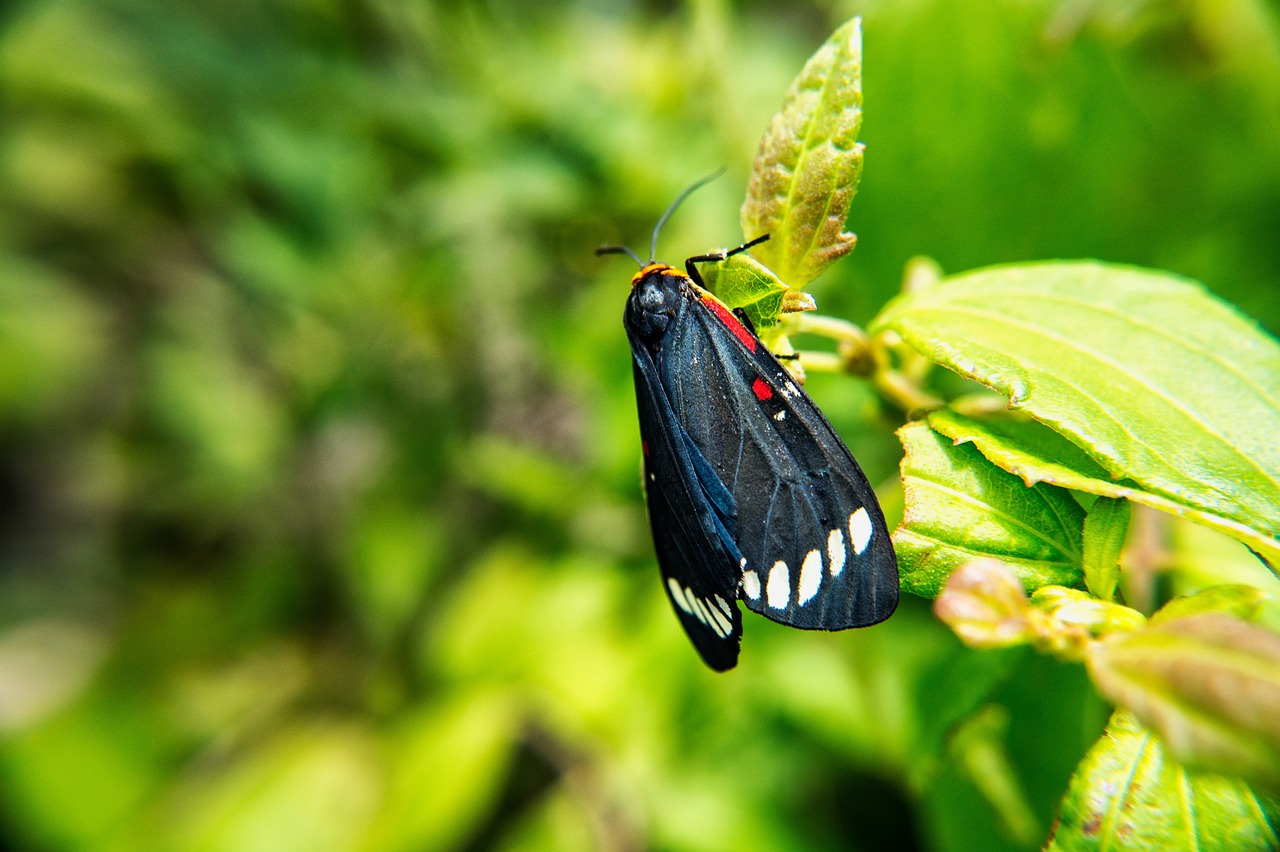
Conservation Strategies to Enhance Genetic Diversity
When it comes to preserving our planet's rich tapestry of life, conservation strategies play a pivotal role in maintaining genetic diversity. Why is this important? Well, think of genetic diversity as the insurance policy for species survival. Just like a diverse investment portfolio can weather economic downturns, a genetically diverse population can better withstand environmental changes and challenges. This section will delve into various approaches that not only protect species but also enhance their genetic variability.
One of the most effective strategies is the establishment of protected areas. These zones act as sanctuaries for wildlife, allowing species to thrive without the pressures of habitat destruction and human interference. Protected areas serve multiple functions: they conserve critical habitats, provide refuge for endangered species, and promote natural processes that support genetic diversity. For instance, when animals are allowed to roam freely within these areas, they can interact and breed with other populations, which is essential for maintaining a healthy gene pool.
Another key strategy is the implementation of captive breeding programs. These programs are designed to increase the numbers of endangered species while also enhancing their genetic diversity. By carefully selecting breeding pairs, conservationists can ensure that the resulting offspring inherit a wide range of genetic traits. Once these populations have stabilized, the ultimate goal is to reintroduce them into their natural habitats. Success stories abound; for example, the California condor was brought back from the brink of extinction thanks to such programs, illustrating how targeted efforts can yield remarkable results.
In addition to these methods, habitat restoration efforts are crucial in enhancing genetic diversity. By restoring degraded ecosystems, we create conditions that allow for the natural migration and mixing of populations. This not only supports the survival of various species but also facilitates the exchange of genetic material, which can lead to stronger, more resilient populations. For instance, restoring wetlands can provide vital habitats for amphibians, whose genetic diversity is essential for their adaptability to changing climates.
Moreover, community involvement is a powerful tool in conservation strategies. Engaging local communities in conservation efforts fosters a sense of ownership and responsibility towards the environment. When people understand the importance of genetic diversity, they are more likely to support initiatives that protect it. Educational programs can raise awareness about the significance of biodiversity and the role it plays in ecosystem health, leading to a more informed public that advocates for conservation.
Ultimately, enhancing genetic diversity is not just about protecting individual species; it’s about preserving the intricate web of life that sustains us all. By employing a combination of protected areas, captive breeding programs, habitat restoration, and community engagement, we can create a future where biodiversity flourishes. The challenge lies in our collective ability to implement these strategies effectively and sustainably.
- What is genetic diversity? Genetic diversity refers to the variety of genes within a species, which is crucial for adaptability and survival.
- Why is genetic diversity important for conservation? It helps species adapt to environmental changes and reduces the risk of extinction.
- How do protected areas enhance genetic diversity? They provide safe habitats where species can breed and interact, promoting genetic mixing.
- What role do captive breeding programs play? They help increase the numbers and genetic diversity of endangered species before reintroducing them to the wild.
- How can communities contribute to conservation efforts? By participating in local conservation initiatives and spreading awareness about the importance of biodiversity.

Protected Areas and Their Benefits
Protected areas are vital sanctuaries for wildlife and plants, acting as safe havens where biodiversity can flourish without the pressures of human encroachment. These designated zones not only safeguard species from habitat loss but also play a crucial role in maintaining genetic diversity. Imagine a bustling city where everyone is crammed into a tiny apartment; the lack of space and resources leads to stress and conflict. Now, think of a vast, open park where people can spread out, breathe, and thrive. That's what protected areas do for our planet's biodiversity.
One of the primary benefits of protected areas is their ability to create environments where species can adapt and evolve without the interference of external threats. These areas often host a variety of habitats, from lush forests to arid deserts, allowing different species to find their niche and flourish. This diversity of habitats fosters a rich tapestry of life, which is essential for the overall health of ecosystems. For example, a protected rainforest can support countless species of plants and animals, each contributing to the genetic pool that enhances resilience against diseases and environmental changes.
Moreover, protected areas serve as crucial refuges for endangered species. When habitats are preserved, these species have a fighting chance to recover and rebuild their populations. This is particularly important for species that have experienced severe declines due to habitat destruction or poaching. By providing a safe space, we can help these species bounce back, ensuring that their unique genetic traits are not lost forever. The success stories of conservation efforts in protected areas are numerous, showcasing how targeted protection can lead to remarkable recoveries.
In addition to supporting wildlife, protected areas also offer significant benefits to local communities and the environment. They can enhance ecosystem services such as clean water, air purification, and carbon sequestration, which are essential for combating climate change. When communities recognize the value of these areas, they are more likely to engage in sustainable practices that benefit both people and nature. It's a win-win situation: while we protect our natural heritage, we also secure a healthier environment for future generations.
To illustrate the impact of protected areas, consider the following table that highlights some key benefits:
| Benefit | Description |
|---|---|
| Habitat Preservation | Maintains essential habitats for diverse species, allowing for natural evolution and adaptation. |
| Species Recovery | Provides safe spaces for endangered species to recover and increase their populations. |
| Ecosystem Services | Enhances services like clean water, air quality, and climate regulation. |
| Community Engagement | Encourages local communities to participate in conservation efforts and sustainable practices. |
In conclusion, the establishment of protected areas is not just a strategy for conservation; it is a necessary commitment to preserving the intricate web of life on our planet. By safeguarding these spaces, we are investing in the future of biodiversity and ensuring that our ecosystems remain resilient and vibrant. As we continue to face environmental challenges, the importance of protected areas will only grow, reminding us that nature needs our protection just as much as we need its bounty.
- What are protected areas? Protected areas are designated regions that are set aside to conserve natural resources and biodiversity.
- How do protected areas benefit wildlife? They provide safe habitats for species to thrive, reproduce, and recover from threats.
- Can protected areas help combat climate change? Yes, they enhance ecosystem services that are vital for climate regulation and resilience.
- How can local communities benefit from protected areas? Communities can gain from ecosystem services, tourism, and sustainable resource use.
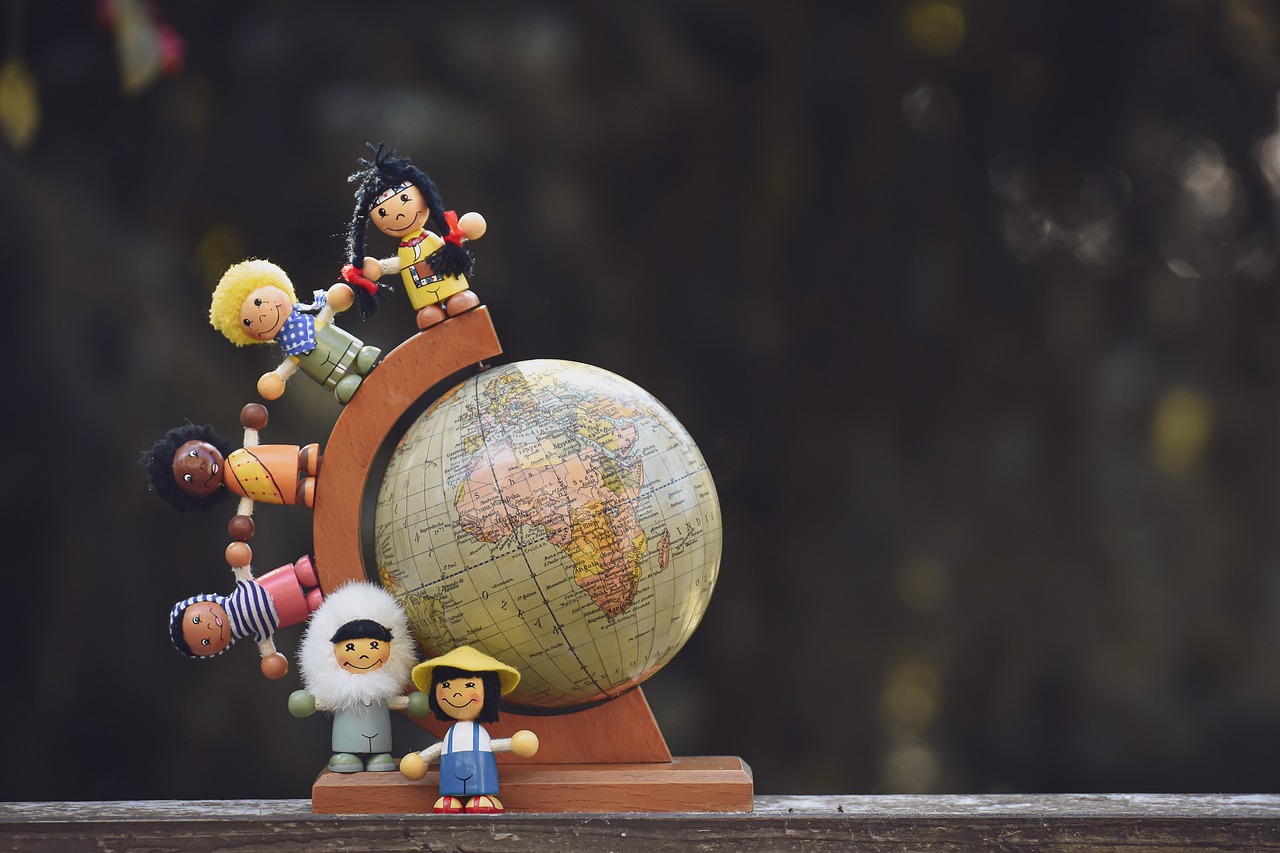
Captive Breeding Programs
Captive breeding programs play a pivotal role in the conservation of endangered species, acting as a lifeline for those populations teetering on the brink of extinction. These programs are designed to breed animals in controlled environments, such as zoos and wildlife reserves, with the ultimate goal of reintroducing them into their natural habitats. The importance of these initiatives cannot be overstated; they not only help to increase population numbers but also aim to restore genetic diversity that may have been lost due to factors like habitat destruction and inbreeding.
One of the most significant benefits of captive breeding is the ability to carefully manage the genetic makeup of the breeding population. By selecting breeding pairs that are genetically diverse, conservationists can help ensure that the offspring are healthier and more resilient. This is crucial because a genetically diverse population is more likely to adapt to changing environmental conditions and resist diseases. For example, the California condor and the black-footed ferret are two species that have seen remarkable recoveries thanks to well-structured captive breeding programs.
However, captive breeding is not without its challenges. It requires substantial resources, expertise, and long-term commitment. The success of these programs hinges on several factors, including:
- Genetic Management: Ensuring a diverse gene pool is essential to avoid the pitfalls of inbreeding.
- Habitat Restoration: Simply breeding animals is not enough; their natural habitats must also be preserved and restored.
- Community Engagement: Involving local communities can foster support for conservation efforts and ensure the sustainability of reintroduced populations.
Moreover, successful captive breeding programs often include comprehensive monitoring and evaluation strategies. This means tracking the health, behavior, and reproductive success of the animals both in captivity and after they are released into the wild. Such assessments are vital for understanding the long-term impacts of these programs and making necessary adjustments to improve outcomes.
In summary, captive breeding programs are a critical component of conservation strategies aimed at enhancing genetic diversity and ensuring the survival of endangered species. They offer a beacon of hope in the fight against extinction, demonstrating how human intervention, when done thoughtfully and responsibly, can make a significant difference in the preservation of our planet's biodiversity.
Q1: What is the main goal of captive breeding programs?
A1: The primary goal of captive breeding programs is to increase the population numbers of endangered species and restore genetic diversity to enhance their survival chances in the wild.
Q2: How do captive breeding programs ensure genetic diversity?
A2: These programs carefully select breeding pairs based on genetic profiles to maximize diversity among offspring, reducing the risks associated with inbreeding.
Q3: Are there any successful examples of captive breeding programs?
A3: Yes, notable successes include the recovery of the California condor and the black-footed ferret, both of which have benefited significantly from these programs.
Q4: What happens to animals after they are bred in captivity?
A4: Once bred, animals are often reintroduced into their natural habitats, where they are monitored to ensure they adapt and thrive in the wild.
Frequently Asked Questions
-
Why is genetic diversity important for ecosystems?
Genetic diversity plays a crucial role in enhancing the resilience of ecosystems. It allows species to adapt to environmental changes and disturbances, ensuring that ecosystems can maintain their functionality and stability over time. Think of it like a toolbox; the more tools you have, the better you can handle different situations!
-
How does genetic diversity affect species survival?
A varied gene pool is essential for the long-term survival of species. It reduces the risk of extinction by promoting healthier populations and increasing reproductive success. Imagine a sports team where every player has different skills; together, they can tackle challenges more effectively than a team of identical players!
-
What are the consequences of inbreeding?
Inbreeding can significantly reduce genetic diversity, leading to increased vulnerability to diseases and lower survival rates. It’s like a family of plants that only reproduce among themselves; over time, they become weaker and less able to adapt to changes in their environment.
-
Can you provide examples of inbreeding in wildlife?
Yes! There are several case studies demonstrating the negative effects of inbreeding. For instance, certain populations of cheetahs have shown reduced fitness and higher mortality rates due to inbreeding, which has left them more susceptible to diseases.
-
What strategies can help mitigate inbreeding?
Conservation strategies such as creating habitat corridors and translocation efforts can introduce genetic variation into isolated populations. This helps to enhance genetic diversity and improve the overall health of species, much like mixing different bloodlines to create a stronger lineage!
-
How does genetic variation aid in adapting to climate change?
Diverse genetic traits enable species to cope with climate change and other environmental pressures. Just as a diverse group of friends brings different perspectives to a problem, genetic variation equips species with various tools to tackle the challenges posed by a changing world.
-
What are some effective conservation strategies for enhancing genetic diversity?
Some effective strategies include establishing protected areas, implementing captive breeding programs, and conducting habitat restoration efforts. These approaches are designed to safeguard species and promote genetic variation, ensuring that ecosystems remain vibrant and resilient.
-
What benefits do protected areas provide for genetic diversity?
Protected areas help conserve habitats and maintain genetic diversity by providing safe spaces for species to thrive. They act as refuges where species can reproduce and evolve without the pressures of habitat destruction and human interference.
-
How do captive breeding programs contribute to genetic diversity?
Captive breeding programs play a vital role in restoring genetic diversity in endangered species. They allow for the careful management of breeding to ensure a healthy gene pool, which can then be reintroduced into the wild, much like giving a second chance to a team that has faced tough losses.



















